Forza is an Italian word that means "force" or "strength." It is used in shouting yells at football (soccer) games in Europe, loosely, as "Forward," as in "Forward *name of team*."
Update
Police in Seattle have shot and killed the AfricanAmerican man suspected of executing four Lakewood, Wash., police officers.
ABC News has confirmed that Maurice Clemmons was killed after police followed leads to a city address where he was hiding, after gunfire was exchanged. Seattle police had been watching several homes, with officers assigned to watch each location.
Clemmons, 37, had been the focus of an intense two-day manhunt that included a systematic raid of the homes of his friends and family, who were believed to have been helping him evade capture.
Police said Monday, November 30, that Clemmons was believed to have been armed while on the run, possibly with several guns. Calling him "dangerous," they said, was an understatement.
Police said on Tuesday, December 1, that they believe Clemmons' friends and family had been providing authorities with false leads all along. It was those misleading tips, they said, that led police and SWAT members to surround a Seattle home for 11 hours Sunday night into Monday.
The standoff in Seattle's Leschi neighborhood ended Monday morning when a police robot and SWAT members confirmed that Clemmons had been able to flee the area undetected.
Authorities say Clemmons had no ties to the house he was believed to have been hiding in and that they believe he was dropped off in the neighborhood Sunday evening.
The area was described as hilly and wooded, providing lots of hiding places.
Pierce County Sheriff's Department spokesman Ed Troyer told ABC News Seattle affiliate KOMO-TV that the raids Monday were being carried out "to collect evidence against him and against those helping him evade us."
Clemmons suffered a gunshot wound to the abdomen in a brief shootout with the Lakewood officers he ultimately killed as they sat in a coffee shop Sunday morning, preparing for their next shift.
+++++++
On November 29, 2009, an ambush of police officers occurred at a Forza coffee shop in the USA.
The four police officers were shot and killed Sunday morning in what authorities called a targeted ambush at the shop. The Forza Coffee Company is near McChord Air Force Base in Tacoma, Washington State, specifically in Lakewood, about 60 kilometres south of Seattle.
Pierce County Sheriff's spokesman Ed Troyer says that the officers were in a coffee establishment, near 116th Street and Steele Street, on the east side of the Air Force base at about 8:30 a.m.
(In the wake of the Fort Hood shooting, no media speculation has occurred as to the relationship to this location and the previous multiple shooting. The military backstory to this incident, however, might turn out to be significant.)
Troyer says the officers were preparing for their shift when a suspect or suspects "walked in with a handgun, opened fire multiple times and then fled the scene," said Troyer. Police are searching for a male suspect (maybe two?) and interviewing witnesses.
Troyer called it an "ambush."
"We hopefully will have answers, but there is nothing more we can tell you," Troyer said. "That's as cold-hearted as it is."
Troyer would not say what agency the officers were from until families could be notified.
The suspects are an AfricanAmerican male and a Caucasian male. Troyer said one of the suspects are 5-foot-7 and 5-foot-10, 20s to 30s, scruffy appearance, with one seen wearing a black coat and blue jeans.
He said they are looking to see if there is any surveillance cameras that may have caught the suspect or suspects on video.
The twilight language explores hidden meanings and synchromystic connections via onomatology (study of names) and toponymy (study of place names). This blog further investigates "name games" and "number coincidences" found in news and history. Examinations are also found in my book The Copycat Effect (NY: Simon and Schuster, 2004).
Sunday, November 29, 2009
Thursday, November 26, 2009
Morgan & Sturgis?
So you are unaware of the name Bob Morgan in conjunction with that of Frank Sturgis, Watergate burglar, CIA operative, and Bay of Pigs player?
People who study Bigfoot understand the history of Robert W. Morgan and his involvement in the search for the elusive creatures. Few realize that Morgan has a rich legacy, as well, cryptopolitically. This will all change in January 2010 after Morgan's new book Citizen Spy is published.
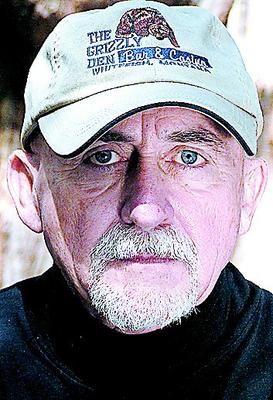
Robert Morgan
Canton reporter Diana Rossetti recently interviewed Morgan, and wrote an interesting overview of the man's life:
See here for the entire article.

Robert Morgan
“Life’s too short to dance with nasty ladies,” jokes Robert W. Morgan, who says his favorite Friday nights are spent at the Grizzly Den in Whitefish, Mont., drinking Obsidian Stout, a brew the bar ships in from Bend, Ore., just for him. Here, he works on a movie set.
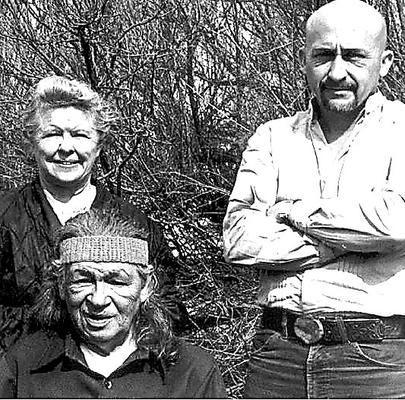
Robert Morgan
Nino Cochise (front), grandson of the original Cochise and nephew of Geronimo, poses with his wife and adopted son, Robert W. Morgan. Cochise gave Morgan the name “Not Afraid.”

Thank you!
People who study Bigfoot understand the history of Robert W. Morgan and his involvement in the search for the elusive creatures. Few realize that Morgan has a rich legacy, as well, cryptopolitically. This will all change in January 2010 after Morgan's new book Citizen Spy is published.

Robert Morgan
Canton reporter Diana Rossetti recently interviewed Morgan, and wrote an interesting overview of the man's life:
At 74 years old, Robert W. Morgan still muses, only half joking, about what he wants to do when he grows up.
Until he narrows the possibilities, here is what the 1954 Lincoln High School [Canton, Ohio] graduate already has under his belt:
Morgan led the first expeditions in search of what he now calls “forest giant people” and others variously dubbed Bigfoot, Sasquatch, Yeti and the Abominable Snowman.
He still believes the hairy, strong-smelling giants exist, and plans a private expedition to Washington in June [2010].
He was commissioned by developers of a multimillion-dollar condominium project on Maui to search for the world’s most beautiful fountain.
One of life’s proudest moments, aside from the birth of his only child, a daughter, was being adopted by the then-100-year-old Nino Cochise, grandson of the original Cochise, nephew of Geronimo and the last Apache born free.
Morgan was on a movie set when a hanging scene featuring screen actor Harold “Oddjob” Sakata, best known for his role in “Goldfinger,” went awry, leaving the 270-pound thespian actually dangling by his neck.
“Bill Shatner ran up and lifted him up by his legs, and another guy and I climbed up and cut the rope,” Morgan recalled. The rope that nearly took Sakata’s life is on Morgan’s desk today.
“When Sakata was dying of stomach cancer in a Honolulu hospital, his nurse was Nancy Thomas. She was from Canton. It turned out, I had dated her sister, Gwen,” he recalled, adding that there is a “special lady” in his life these days.
The late Frank Sturgis, sometimes remembered as one of the Watergate burglars but also as a decorated World War II U.S. Marine, enlisted Morgan in a Miami-based, CIA-funded paramilitary group training to overthrow Cuban dictator Fidel Castro.
The kid with the piercing blue eyes who grew up on Prospect Avenue in Canton’s southwest end is a successful screenwriter and filmmaker, having worked around the world, including a stint in the former Soviet Union.
He recently completed a two-year radio blog and remains a popular radio talk show guest in the Pacific Northwest.
Currently, Morgan is burning the midnight oil at his home, where bears wandering his deck are the only visitors. He is steaming toward a publisher’s deadline for his latest book, “Citizen Spy,” due for release in January.
The nonfiction thriller reveals Morgan’s own story of teaming with the FBI and the Drug Enforcement Administration to foil a drug-trafficking ring operated by the Mafia....
See here for the entire article.

Robert Morgan
“Life’s too short to dance with nasty ladies,” jokes Robert W. Morgan, who says his favorite Friday nights are spent at the Grizzly Den in Whitefish, Mont., drinking Obsidian Stout, a brew the bar ships in from Bend, Ore., just for him. Here, he works on a movie set.

Robert Morgan
Nino Cochise (front), grandson of the original Cochise and nephew of Geronimo, poses with his wife and adopted son, Robert W. Morgan. Cochise gave Morgan the name “Not Afraid.”

Thank you!
Sunday, November 22, 2009
JFK C2C
On the 46th anniversary of the JFK assassination, thus matching the age of 46 for the young president at the time of his death, a comprehensive conspiracy overview of the event was broadcast on Sunday night's "JFK Special VII" on Coast to Coast AM from 10 pm - 2 am PT (1 AM to 5 am ET).
My good friend conspiracy expert Kenn Thomas, along with award-winning journalist Jim Marrs (whom I have served with on JFK mystery death panels), and TV producer and critic John Barbour joined George Knapp to discuss their theories about the tragic day 46 years ago when the world lost John F. Kennedy.
Update: The C2C summary notes ~
For a further overview of the program, links to the guests' websites, identification of the bumper music, and the guests' JFK assassination recommended reading list, visit the archival site for the show here.
My good friend conspiracy expert Kenn Thomas, along with award-winning journalist Jim Marrs (whom I have served with on JFK mystery death panels), and TV producer and critic John Barbour joined George Knapp to discuss their theories about the tragic day 46 years ago when the world lost John F. Kennedy.
Update: The C2C summary notes ~
George Knapp presided over the 7th annual JFK Special, featuring three acclaimed Kennedy assassination researchers. He was joined by award-winning journalist Jim Marrs along with TV producer and critic John Barbour in the first half of the program as well as conspiracy expert Kenn Thomas in the latter half of the show.
"It only seems controversial," Marrs said of the Kennedy assassination, because there is a such a glaring difference of opinion between those who believe the government's version of events and "those who have actually studied the case."
Barbour and Marrs cited a myriad of suspicious elements involving the Kennedy assassination, such as the FBI's handling of evidence following the murder and issues with the veracity of the gunpowder tests administered to Lee Harvey Oswald. Barbour noted that the spent shell casings, allegedly from the shooting, were found on the book depository's 6th floor window sill sitting "one inch apart and facing the street."
An amused Marrs observed that such a scenario was would be impossible because, when discharging a spent shell from that type of gun, "it flings it over your right shoulder."
They also discussed the nature of the enduring mystery surrounding the murder of Kennedy. Marrs explained that much of the confusion about the event has been created on purpose. "The cover-up has been based on obfuscation," he observed, noting that all the various suspects and factions blamed for the assassination only serve to make the case harder to truly solve.
"All the facts were there, they were just never investigated," Barbour concurred.
Ultimately, Marrs mused, the true story of what happened on that day in Dallas will never be "officially" known because it is simply too troubling to be revealed by the government.
In the second half of the program, Kenn Thomas focused on the connection between the JFK assassination and infamous esoteric figure Fred Crisman. Thomas explained that he emerged as Jim Garrison's suspect for the infamous Grassy Knoll shooter after the prosecutor received an anonymous letter implicating the enigmatic Crisman.
Additionally, Thomas cited a report, called the Torbitt Document, written by a lawyer in Texas, that also independently advanced the same theory as to Crisman's role in the assassination. Potentially placing him at the scene of the crime, Thomas said, is the "three tramps" photo where the character known as "Frenchie" is a "spitting image of Crisman."
For a further overview of the program, links to the guests' websites, identification of the bumper music, and the guests' JFK assassination recommended reading list, visit the archival site for the show here.
Friday, November 20, 2009
Saipan: 5 Dead
Saipan will forever be remembered as the site of one of World War II's deadliest suicidal melodramas. Now a new incident has unfolded on the island, beginning and ending near those past cliffs of suicide.
Saipan is often recalled as the setting where thousands of Japanese soldiers and local civilians jumped to their deaths from the island's cliffs as the American assault drew to a close in July 1944. As the battle of Saipan reached its final days, Japanese soldiers and panicked civilians made their way north to the cliffs. The civilians and soldiers leapt from the island's Marpi Point and other cliffs, dying on the rocks or drowning in the sea.
Now a shooting spree that began near one of those points has ended in suicide near another of those same cliffs. A gunman went on a rampage on the Pacific resort island of Saipan, Northern Mariana Islands, on Friday, November 20, 2009, killing four people and wounding six others before fatally shooting himself, officials said.
Public Safety spokesman Jason Tarkong said two men, a 4-year-old boy and a 2-year-old girl were killed in a half-hour of violence. The dead were all local residents.
The six wounded included a 4-year-old local girl and five visitors from South Korea.
"The lieutenant governor and I are monitoring the situation closely and working with officials from (Public Safety) and the FBI and we will continue to keep everyone informed," Gov. Benigno R. Fitial said.
Authorities said the suspected shooter is a contract worker in his 30s or 40s from Asia, but did not provide his name or home country.
The shootings occurred in two different areas of the island, starting at 11:21 a.m. local time with a popular tourist spot in Marpi where the gunman fired a barrage of bullets from his white van at the Koreans. A 39-year-old man was critically injured with a gunshot wound to his back.
The suspect then drove to the Kannat Tabla Shooting Range where he killed two men in their early 20s and the two children. He also shot a 4-year-old girl, who suffered a gunshot wound to the chest and was in critical condition.
His white van was discovered at Banzai Cliff, where police recovered three rifles.
Officials said the gunman's body was found along the edge off the cliff line near the vehicle with a .22-caliber rifle strapped around his shoulder.
"I want to assure the people of the commonwealth and all of our visiting tourists that the Department of Public Safety has the situation under control and that the individual responsible for these tragedies took his own life," Fitial said, in a summarized report from Gemma Casas and Kwang-tae Kim of the Associated Press.
Saipan is a popular tourist destination among South Koreans, with more than 111,000 South Koreans visiting the island in 2008, according to the Marianas Visitors Authority. The U.S. Commonwealth of the Northern Mariana Islands is located about 3,800 miles southwest of Hawaii.
During World War II, as the Battle of Saipan raged, despite repeated calls by the U.S. military to surrender, civilians chose death by jumping off cliffs or drowning themselves in the sea. They had been led to believe that surrender would mean murder, rape and torture at the hands of U.S. forces. Captured soldiers and civilians, instead, were treated with respect and confined at Camp Susupe.
According to a report on PBS, "On July 9, [1944] organized resistance on Saipan ceased. The costs were high. Americans suffered more than 14,000 casualties including 3,426 killed or missing. Of the 30,000 Japanese troops that defended Saipan, less than 1,000 remained alive at battle's end. Although exact numbers are not known, it is believed that close to 1,000 civilians perished at Marpi Point."
Saipan is often recalled as the setting where thousands of Japanese soldiers and local civilians jumped to their deaths from the island's cliffs as the American assault drew to a close in July 1944. As the battle of Saipan reached its final days, Japanese soldiers and panicked civilians made their way north to the cliffs. The civilians and soldiers leapt from the island's Marpi Point and other cliffs, dying on the rocks or drowning in the sea.
Now a shooting spree that began near one of those points has ended in suicide near another of those same cliffs. A gunman went on a rampage on the Pacific resort island of Saipan, Northern Mariana Islands, on Friday, November 20, 2009, killing four people and wounding six others before fatally shooting himself, officials said.
Public Safety spokesman Jason Tarkong said two men, a 4-year-old boy and a 2-year-old girl were killed in a half-hour of violence. The dead were all local residents.
The six wounded included a 4-year-old local girl and five visitors from South Korea.
"The lieutenant governor and I are monitoring the situation closely and working with officials from (Public Safety) and the FBI and we will continue to keep everyone informed," Gov. Benigno R. Fitial said.
Authorities said the suspected shooter is a contract worker in his 30s or 40s from Asia, but did not provide his name or home country.
The shootings occurred in two different areas of the island, starting at 11:21 a.m. local time with a popular tourist spot in Marpi where the gunman fired a barrage of bullets from his white van at the Koreans. A 39-year-old man was critically injured with a gunshot wound to his back.
The suspect then drove to the Kannat Tabla Shooting Range where he killed two men in their early 20s and the two children. He also shot a 4-year-old girl, who suffered a gunshot wound to the chest and was in critical condition.
His white van was discovered at Banzai Cliff, where police recovered three rifles.
Officials said the gunman's body was found along the edge off the cliff line near the vehicle with a .22-caliber rifle strapped around his shoulder.
"I want to assure the people of the commonwealth and all of our visiting tourists that the Department of Public Safety has the situation under control and that the individual responsible for these tragedies took his own life," Fitial said, in a summarized report from Gemma Casas and Kwang-tae Kim of the Associated Press.
Saipan is a popular tourist destination among South Koreans, with more than 111,000 South Koreans visiting the island in 2008, according to the Marianas Visitors Authority. The U.S. Commonwealth of the Northern Mariana Islands is located about 3,800 miles southwest of Hawaii.
During World War II, as the Battle of Saipan raged, despite repeated calls by the U.S. military to surrender, civilians chose death by jumping off cliffs or drowning themselves in the sea. They had been led to believe that surrender would mean murder, rape and torture at the hands of U.S. forces. Captured soldiers and civilians, instead, were treated with respect and confined at Camp Susupe.
According to a report on PBS, "On July 9, [1944] organized resistance on Saipan ceased. The costs were high. Americans suffered more than 14,000 casualties including 3,426 killed or missing. Of the 30,000 Japanese troops that defended Saipan, less than 1,000 remained alive at battle's end. Although exact numbers are not known, it is believed that close to 1,000 civilians perished at Marpi Point."
Tuesday, November 17, 2009
Wicker Man's Woodward Dies
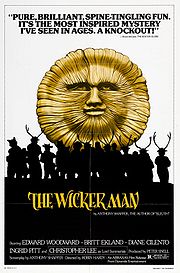
Edward Woodward, 79, the central leading actor in The Wicker Man, died on Monday, November 16, 2009.
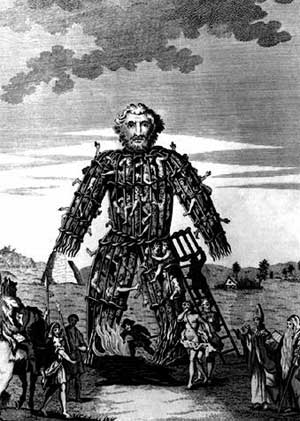
The Wicker Man is a 1973 British horror film, combining thriller, existential horror and musical genres, directed by Robin Hardy and written by Anthony Shaffer. The film stars Edward Woodward, Christopher Lee, Diane Cilento, Ingrid Pitt and Britt Ekland. Paul Giovanni composed the soundtrack. The film is now considered a cult classic.
Based on David Pinner's 1967 novel The Ritual, the story is about a Scottish police officer, Sergeant Neil Howie (played by Woodward), visiting the isolated island of Summerisle to search for a missing girl (named, significantly, "Rowan") whom the locals claim never existed. Police Sergeant Neil Howie is sent an anonymous letter recommending that he investigate the disappearance of a young girl, Rowan Morrison, on the remote Hebridean island of Summerisle (a fictional island apparently inspired by the real-life Summer Isles of the Inner Hebrides).
The inhabitants of Summerisle all celebrate a reconstructed form of Celtic paganism, which upsets the devoutly Christian Sergeant. In the original uncut version of the film, he witnesses couples copulating in the church yard, in addition to finding a naked woman sobbing on a grave. He angrily threatens to involve the authorities after discovering the school mistress (Diane Cilento) is teaching young girls about the phallic importance of the maypole.

The character played by Woodward (an intriguing name, in and of itself) finds himself attracted strongly to Willow (Britt Ekland), the sexually liberated daughter of the landlord. In the restored director's cut of the film, Lord Summerisle refers to Willow as Aphrodite when presenting her with a young male adolescent to seduce. The police sergeant cannot help but overhear their passionate lovemaking. To compound matters, Willow tries to seduce him the following night, dancing naked and beating upon his bedroom wall, but he resists the torment with some obvious physical discomfort.
(The uncensored version is difficult to view online, but the pagan passion of "Willow's Song" is clearly evident even in what is to be discovered on YouTube.)
Lord Summerisle (Christopher Lee) clearly is a match for Sergeant Howie. During a May Day festival, Howie attempts to learn more about what is occurring there by dressing at Punch. But that backfires, to say the least and perhaps to state so as a pun.
Lord Summerisle and his followers explain to the good Christian Sergeant that his sacrifice will be effective because Howie came to them of his own free will; as a virgin; with the power of a king (by representing the law); and as a fool ("You are the Fool, Mr. Howie: Punch, one of the great fool-victims in history! For you have accepted the role of King-For-A-Day, and who but a Fool would do that?" asks the school mistress, referring to the way that Howie has conducted his investigations).
Howie in turn admonishes them, claiming that killing him will not restore their fertility and that they all would be guilty of murder. He argues that if the crops fail next year they will have to sacrifice Summerisle. Lord Summerisle asserts that Howie's sacrifice will have the desired results.
The policeman is dragged screaming into the belly of a large hollow wicker statue of a man which is subsequently ignited. In the final scene of the film, the islanders surround the burning wicker man and sing the Middle English folk-song "Sumer Is Icumen In" while the terrified Howie shouts out Psalm 23. The film ends with the Wicker Man engulfed in flames, and collapsing in front of the setting sun.
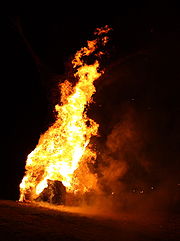
Woodward, who also starred in Breaker Morant and in the "The Equalizer" on television, died in a hospital in Cornwall after an illness, said Janet Glass of the Eric Glass Ltd. agency in London.
He won an Emmy Award in 1990 for "Remembering World War II" and a Golden Globe in 1987 for "The Equalizer," which ran for 88 episodes from 1985 to 1989 on the U.S. network CBS.
In a career that began in 1946 in a regional production of "A Kiss for Cinderella," Woodward played roles in productions ranging from the popular British soap opera "Eastenders" to productions of Shakespeare, and at least 40 films for theater or television.
His last film appearances were in 2007's Hot Fuzz (an ironic name, considering The Wicker Man role) and Congregation of Ghosts, now in post-production.
"I think I've probably more television than any actor living," Woodward said in a 1987 interview with The Associated Press. "I've done over 2,000, could be 3,000 now, television productions."
"I suppose there is also the feeling that it is the largest medium by far for information, education and above all, entertainment," he added. "And after all, that's what an actor's life is all about. Getting work and entertaining people."
At the time, Woodward was promoting a U.S. television film of Uncle Tom's Cabin, in which played the wicked slave owner, Simon Legree. He found the role strangely refreshing.
"If you are a British actor, you do lots of Shakespeare and lots of classical work. There is always a great actor who has just played your character," he said.
"Lucky for me, Simon Legree has not been done very often," he added.
Woodward is survived by his second wife, actress Michele Dotrice, their daughter, and two sons and a daughter from his first marriage.
Funeral arrangements have not been announced.
Tuesday, November 10, 2009
In The Wake Of Fort Hood
There has been some foolish news articles in the aftermath of the Fort Hood shooting deaths discussing Islam, ignoring the underlying similar nature of that shooting to "rampage killings" and not understanding that in its wake copycats would naturally occur.
Indeed, people should open their eyes and look, yes, merely look, at the faces of the victims and the shooters to find some overlaps that are striking in those killed and the killers. Lost in all of the talk of the Fort Hood alleged shooter's Muslim background is the fact that he targeted mental health professionals in the group he fired upon. Did the Fort Hood shooter aim at some who most reflected parts of himself that he hated ~ even down to shooting at bald or short-haired men and mental health personnel?
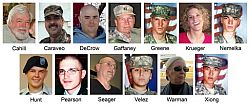
The Fort Hood victims.
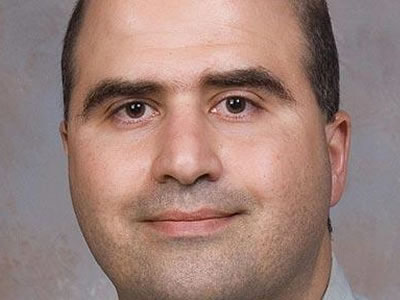
The Fort Hood shooter.
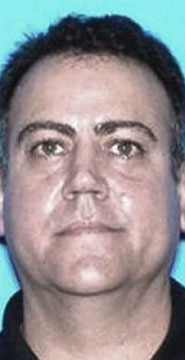
The Orlando killer.
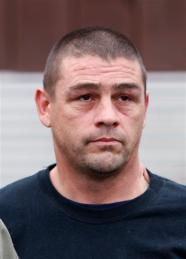
The New York Hostage Taker.
Note the similar facial features, and overall appearance of these men. The suicidal "rampage" individual tends to identify with one another in a cycle on many levels, including visually.
We need only let the facts be recorded and the unfolding history of such events speak to the reality of behavior contagion occurring.
On Friday, November 6, the day after the Guy Fawkes Day shooting at Fort Hood, Texas, authorities in Orlando, Florida, said a debt-ridden man Jason Rodriguez, 40, who believed his former employer was interfering with his unemployment benefits was blamed for a workplace shooting. Rodriguez was fired by the engineering firm of Reynolds, Smith and Hills two years ago. Otis Beckford, 26, was the lone fatality in the shooting, and five were wounded.
Then on Tuesday, a standoff began around 7:45 a.m. Eastern Time and was over by about 10 a.m. at an upstate New York middle school. A former student Christopher Craft Sr., 42, got into the Stissing Mountain Middle School just after classes began Tuesday morning carrying a hidden disassembled shotgun. He allegedly put the weapon together in bathroom before holding Principal Bob Hess hostage for more than an hour.
Craft had two sons who had attended the school, but school officials said neither was currently enrolled. Craft has a son in the military and is allegedly upset with the government. Police say Craft and his hostage were contained to one room in the school, located about 90 miles north of New York City.
Later on Tuesday, November 10, police report that two have died in a suburban Portland, Oregon office park shooting. The two people were killed and two others wounded in a shooting at a Tualatin office park. The shooting at a drug-testing facility was reported at 11:48 a.m. Pacific Time Tuesday. Police said the suspect is not at large but there are no additional details.
KATU-TV reported a witness describing one woman wearing something that looked like a lab coat with blood coming from what appeared to be multiple gunshot wounds.
Do you happen to think that the Portland, Oregon shooter will be revealed to be a middle-aged male with close-cropped or no hair?
Update: This one appears to be a domestic murder-suicide brought to work. The shooting took place at Legacy Metro Lab in Tualatin, Oregon. It has been confirmed that two people are deceased, one of which included the adult male shooter who died from what appears to be a self inflicted gun shot wound. The other deceased was an adult female employee of the business. Robert James Beiser, 39, shot and killed his estranged wife Teresa Marie Beiser, 36, and then himself. The wounded are a 20-year-old woman and a 63-year-old man.
Further Update: Vail, Colorado ~ A man was killed and three others were injured in a shooting Saturday night, November 7, 2009, at the Sandbar in West Vail, Police Chief Dwight Henninger said. Witnesses said a man was being removed from the Sandbar by staff when he began firing a gun. Richard “Rossi” Moreau, 63, a Vail resident, was taken into custody as the suspect in the shooting, Henninger said. The man who died was from Carbondale, and the ages of the three other victims, all male, were 25, 29 and 63, police said.
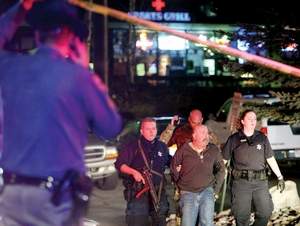
Suspect Richard Moreau appears to fit the physical profile of the shooters during this rampage cycle. What is the twilight language being transmitted in the mere broadcasting of the Ft. Hood killer's image?
Indeed, people should open their eyes and look, yes, merely look, at the faces of the victims and the shooters to find some overlaps that are striking in those killed and the killers. Lost in all of the talk of the Fort Hood alleged shooter's Muslim background is the fact that he targeted mental health professionals in the group he fired upon. Did the Fort Hood shooter aim at some who most reflected parts of himself that he hated ~ even down to shooting at bald or short-haired men and mental health personnel?

The Fort Hood victims.

The Fort Hood shooter.

The Orlando killer.

The New York Hostage Taker.
Note the similar facial features, and overall appearance of these men. The suicidal "rampage" individual tends to identify with one another in a cycle on many levels, including visually.
We need only let the facts be recorded and the unfolding history of such events speak to the reality of behavior contagion occurring.
On Friday, November 6, the day after the Guy Fawkes Day shooting at Fort Hood, Texas, authorities in Orlando, Florida, said a debt-ridden man Jason Rodriguez, 40, who believed his former employer was interfering with his unemployment benefits was blamed for a workplace shooting. Rodriguez was fired by the engineering firm of Reynolds, Smith and Hills two years ago. Otis Beckford, 26, was the lone fatality in the shooting, and five were wounded.
Then on Tuesday, a standoff began around 7:45 a.m. Eastern Time and was over by about 10 a.m. at an upstate New York middle school. A former student Christopher Craft Sr., 42, got into the Stissing Mountain Middle School just after classes began Tuesday morning carrying a hidden disassembled shotgun. He allegedly put the weapon together in bathroom before holding Principal Bob Hess hostage for more than an hour.
Craft had two sons who had attended the school, but school officials said neither was currently enrolled. Craft has a son in the military and is allegedly upset with the government. Police say Craft and his hostage were contained to one room in the school, located about 90 miles north of New York City.
Later on Tuesday, November 10, police report that two have died in a suburban Portland, Oregon office park shooting. The two people were killed and two others wounded in a shooting at a Tualatin office park. The shooting at a drug-testing facility was reported at 11:48 a.m. Pacific Time Tuesday. Police said the suspect is not at large but there are no additional details.
KATU-TV reported a witness describing one woman wearing something that looked like a lab coat with blood coming from what appeared to be multiple gunshot wounds.
Do you happen to think that the Portland, Oregon shooter will be revealed to be a middle-aged male with close-cropped or no hair?
Update: This one appears to be a domestic murder-suicide brought to work. The shooting took place at Legacy Metro Lab in Tualatin, Oregon. It has been confirmed that two people are deceased, one of which included the adult male shooter who died from what appears to be a self inflicted gun shot wound. The other deceased was an adult female employee of the business. Robert James Beiser, 39, shot and killed his estranged wife Teresa Marie Beiser, 36, and then himself. The wounded are a 20-year-old woman and a 63-year-old man.
Further Update: Vail, Colorado ~ A man was killed and three others were injured in a shooting Saturday night, November 7, 2009, at the Sandbar in West Vail, Police Chief Dwight Henninger said. Witnesses said a man was being removed from the Sandbar by staff when he began firing a gun. Richard “Rossi” Moreau, 63, a Vail resident, was taken into custody as the suspect in the shooting, Henninger said. The man who died was from Carbondale, and the ages of the three other victims, all male, were 25, 29 and 63, police said.

Suspect Richard Moreau appears to fit the physical profile of the shooters during this rampage cycle. What is the twilight language being transmitted in the mere broadcasting of the Ft. Hood killer's image?
Thursday, November 05, 2009
Fort Hood Shootings
Breaking: Alleged Fort Hood lone gunman -- U.S. Army Maj. Nidal Malik Hasan -- is alive and in custody, said Lt. Gen. Robert Cone.
And so while the news also was that there were two suspects in custody, another still on the run, and another dead, by Thursday evening, the military said "one shooter, still alive" and the earlier report of a dead law enforcement officer is wrong too. It's a female and she is still alive too.
Updated earlier.
Remember, remember the 5th of November: Today is Guy Fawkes Day!
The dead suspect has been identified as a mental health professional, Army psychiatrist Major Malik Nadal Hasan, who had voiced objections to being deployed to the Mideast. It is not known if Hasan was Muslim.
Hasan was born in Virginia and got a bachelor's degree in biochemistry at Virginia Tech, where he was a member of the ROTC, in 1997. He received his medical degree from the Uniformed Services University of the Health Sciences F. Edward Hébert School of Medicine in 2001.
He completed a residency in psychiatry at Walter Reed in 2007 and a fellowship in disaster and preventive psychiatry, also at Walter Reed, this year. He also did his internship there.
Ten years after Hasan's graduation, Virginia Tech was the scene of the worst mass shooting in U.S. history. On April 16, 2007, Seung-Hui Cho, a senior English major, killed 32 people and wounded dozens of others in two attacks before killing himself.
Fort Hood, located just 60 miles north from Austin, is the largest U.S. military installation in the world, and has suffered the greatest number of casualities of all American bases in the war on Iraq.
The base is a 340 sq. mile facility located in Killeen, Texas (Bell County) and is home to the 1st Cavalry Division, which was one of the first groups of soldiers deployed to Iraq.
On October 16, 1991, George Hennard murdered 23 people and then died by suicide in Luby's Cafeteria in Killeen (known as Luby's Massacre).
Earlier///
Latest figures are that 12 are dead (including one shooter), 31 wounded, one of the dead includes a civil law enforcement officer; one shooter was said to be a "major" with an "Arab-sounding name." Two other suspects are in custody.
Earlier///Earlier///
Breaking news out of Ft. Hood, Texas, is that upwards of 9 soldiers have been killed and about 30 others were injured by one, two, or three uniformed individuals shooting at post personnel.
One uniformed suspect (an "officer") was in custody, another "cornered" suspect may have also been arrested, and rumors of a third shooter are being heard.
Other locations on or near Ft. Hood are also reporting gunfire.
President Obama addressed these events at 5 pm Eastern.
===
Remember, remember the Fifth of November,
The Gunpowder Treason and Plot,
I know of no reason
Why the Gunpowder Treason
Should ever be forgot.
Guy Fawkes, Guy Fawkes, t'was his intent
To blow up the King and Parli'ment.
Three-score barrels of powder below
To prove old England's overthrow;
By God's providence he was catch'd (or by God's mercy)
With a dark lantern and burning match.
Holloa boys, holloa boys, let the bells ring.
Holloa boys, holloa boys, God save the King!
And what should we do with him? Burn him!
And so while the news also was that there were two suspects in custody, another still on the run, and another dead, by Thursday evening, the military said "one shooter, still alive" and the earlier report of a dead law enforcement officer is wrong too. It's a female and she is still alive too.
Updated earlier.
Remember, remember the 5th of November: Today is Guy Fawkes Day!
The dead suspect has been identified as a mental health professional, Army psychiatrist Major Malik Nadal Hasan, who had voiced objections to being deployed to the Mideast. It is not known if Hasan was Muslim.
Hasan was born in Virginia and got a bachelor's degree in biochemistry at Virginia Tech, where he was a member of the ROTC, in 1997. He received his medical degree from the Uniformed Services University of the Health Sciences F. Edward Hébert School of Medicine in 2001.
He completed a residency in psychiatry at Walter Reed in 2007 and a fellowship in disaster and preventive psychiatry, also at Walter Reed, this year. He also did his internship there.
Ten years after Hasan's graduation, Virginia Tech was the scene of the worst mass shooting in U.S. history. On April 16, 2007, Seung-Hui Cho, a senior English major, killed 32 people and wounded dozens of others in two attacks before killing himself.
Fort Hood, located just 60 miles north from Austin, is the largest U.S. military installation in the world, and has suffered the greatest number of casualities of all American bases in the war on Iraq.
The base is a 340 sq. mile facility located in Killeen, Texas (Bell County) and is home to the 1st Cavalry Division, which was one of the first groups of soldiers deployed to Iraq.
On October 16, 1991, George Hennard murdered 23 people and then died by suicide in Luby's Cafeteria in Killeen (known as Luby's Massacre).
Earlier///
Latest figures are that 12 are dead (including one shooter), 31 wounded, one of the dead includes a civil law enforcement officer; one shooter was said to be a "major" with an "Arab-sounding name." Two other suspects are in custody.
Earlier///Earlier///
Breaking news out of Ft. Hood, Texas, is that upwards of 9 soldiers have been killed and about 30 others were injured by one, two, or three uniformed individuals shooting at post personnel.
One uniformed suspect (an "officer") was in custody, another "cornered" suspect may have also been arrested, and rumors of a third shooter are being heard.
Other locations on or near Ft. Hood are also reporting gunfire.
President Obama addressed these events at 5 pm Eastern.
===
Remember, remember the Fifth of November,
The Gunpowder Treason and Plot,
I know of no reason
Why the Gunpowder Treason
Should ever be forgot.
Guy Fawkes, Guy Fawkes, t'was his intent
To blow up the King and Parli'ment.
Three-score barrels of powder below
To prove old England's overthrow;
By God's providence he was catch'd (or by God's mercy)
With a dark lantern and burning match.
Holloa boys, holloa boys, let the bells ring.
Holloa boys, holloa boys, God save the King!
And what should we do with him? Burn him!
Wednesday, November 04, 2009
Zamora Dies

Former Socorro, New Mexico police officer and close encounter eyewitness to one of the most well-known UFO cases in history, Lonnie Zamora died Monday night, November 2, 2009, of heart failure. Socorro investigator Ray Stanford widely informed the ufo community Wednesday afternoon. Stanford received direct confirmation from the Socorro Police Department.

Lonnie Zamora (1933 - 2009) was a New Mexico police officer who reported a close encounter of the first, second and third kinds on Friday, April 24, 1964, near Socorro, New Mexico.
Zamora’s account received considerable coverage in the mass media, and is sometimes regarded as one of the best documented, yet most perplexing UFO reports. It was one of the accounts that helped persuade astronomer J. Allen Hynek that some UFO reports represent an intriguing, unsolved mystery.

The Encounter
Zamora had been a police officer in Socorro for some years. He was generally regarded as a competent, honest man, though perhaps humorless and overly strict. He was especially known for being tough on speeding motorists.
On April 24, 1964, about 5:45 p.m., Zamora was in pursuit of a speeder. Not long after that pursuit began, he heard a loud sound, which he first thought was an explosion, perhaps from a nearby dynamite storage shack. He abandoned the speeder to investigate.
Southwest of the dynamite shack, Zamora saw what he described as a bright, blue-white “cone of flame”, accompanied by a continual loud roaring sound. He drove towards the light over the rough, dirt road. By the time he crested a tall hill, the flame and sound had both stopped. Zamora said the roar was unlike that of a jet and lasted about 10 seconds from when he first heard it. It went from a high frequency to a low frequency before it stopped.
About 150-200 meters away, he spotted a white, shiny oval object on the ground at the bottom of an arroyo. His first thought was that it was an overturned car. Zamora then noticed two human-like figures near the object. Zamora later wrote that the two figures wore "white coveralls" and were "pretty close to the object on its northwest side, as if inspecting it".
The figure nearest Zamora "must have seen me, cause [sic] when I turned and it looked straight at my car it seemed startled--almost seemed to jump somewhat." He also described the beings as “about the size of boys” but essentially "normal in shape". They were shorter than the small bush they were standing next to, later measured at being about 5 feet high.
Zamora went on to write that he drove closer to the object, intending to offer aid. He radioed police dispatch to inform them he was on the scene of a "possible 10-40" (an auto accident). He would later report that as he got closer to the object, he realized it was not an automobile, nor any kind of conventional craft. He thought the object was perhaps some kind of experimental military craft from White Sands Proving Ground, not far away.
He drove closer to the object, parked it at the edge of the arroyo, less than 100 feet from the craft, then got out of the car for a closer look. Zamora heard two or perhaps three loud thumping sounds, "like someone hammering or shutting a door or doors".
Zamora started to descend on foot down the slope of the arroyo. He noted a red logo or insignia in the middle of the oval object, about 2-1/2 feet wide by 2 feet tall. He also saw what he described as two "legs" supporting the craft. The bottom of the object cleared the ground by maybe 3-1/2 feet.
When he was less than 50 feet away, the object began making a loud noise and a blue-white flame shot from the object’s underside. He later noted that the flame was different from an ordinary flame, lacked smoke, and seemed to penetrate into the soil instead of being reflected off. The flame was tinged orange at the bottom.
The roar started out low frequency and loud, then rapidly increased in pitch and became very loud. He wrote, "Thought, from roar, it might blow up." He dove to the ground and covered his head with his arms. The roar continued, but there was no explosion.
Zamora got up, turned around, and ran panicked back his car, but shot glances over his shoulder to keep an eye on the object as it rose higher. Still quite startled and "afraid of the roar" Zamora ran into his car, stumbled and fell, temporarily losing his glasses. He got up and ran maybe another 50 feet across the dirt road and dove down behind the rise. As he was running and about 25 feet from the car, Zamora glanced back and saw that the object had risen about to the level of the car, or 20-25 feet above the arroyo bottom.
The object continued its ascent as Zamora watched crouched down. He wrote, "The object seemed to lift up slowly" and then flew away. Once it was airborne and began its departure, the roar stopped; it didn't emit any flame, smoke, or sound.
After the craft went silent and started to leave, Zamora quickly ran back to his car, keeping the object in sight. He retrieved his glasses, got into the driver's seat and called in on his two-way radio, all the time watching the object. It initially departed horizontally about 10-15 feet above the ground, rapidly picked up speed, then went into a steep climb as it approached the mountains, fading from view about 6 miles distant to the southwest.
The entire encounter--from his first noting the "explosion" as it landed to the object's flying away over the horizon--had lasted about two minutes. The entire departure--from the time the object cleared the arroyo, went silent, and finally disappeared in the distance-- lasted maybe 10-20 seconds. The latter time can be used to compute an approximate departure speed and has important implications about the nature of the craft.
Not long after the object disappeared, one of Zamora's colleagues, Sgt. Chavez, arrived at the scene. He thought that Zamora was quite disturbed; his face was "white, very pale." Chavez said, "You look like you've seen the devil." Zamora replied "Maybe I have."
Zamora related his account of what had happened, then he and Chavez examined the scene. There were four rectangular impressions in the sand where the object's landing pads had been, plus smaller impressions that Zamora presumed were footprints of the occupants. Some of the nearby shrubs were scorched and smoldering. One of the shrubs near the center of the craft had been sliced cleanly in half. The ground under the craft center was blackened in a circle and some of the sand and rocks had been vitrified.
Though Chavez had known Zamora for years, and judged him a sober, reliable police officer, the story seemed too much to believe. Chavez briefly entertained the possibility that the affair was a hoax, and secretly examined Zamora's car for tools or equipment he might have used to create the physical evidence at the scene (he found nothing of the sort).
A few minutes after Chavez had arrived, several other officials came to the scene after hearing Zamora's call on the radio: Police officers Ted V. Jordan, James Luckie and Cattle Inspector Robert White.
Jordan had a camera and took extensive photos of the scene starting about 10 minutes after the craft left. Jordan would later comment, "The flame from that damn thing just sliced that greasewood bush in half, just burned it off clean like a blade of fire had cut right through it."
The men discussed the encounter, and determined the likeliest explanation was that the craft was from White Sands Proving Ground, though Zamora insisted the craft's occupants were far smaller than adult men. They all left the scene by 7:00 p.m.
Media Reaction and Investigations
Within hours, word of Zamora's encounter had reached the news: many people had heard the radio traffic, including a few reporters. Within days, reporters from the Associated Press and United Press International were in Socorro. Members of civilian UFO study group APRO were on the scene within two days, as were officers representing the U.S. Air Force's Project Blue Book. NICAP investigators appeared the following Tuesday. The first NICAP investigator was Ray Stanford, who would later write a detailed book account of his investigation, Socorro 'Saucer' in a Pentagon Pantry (Blueapple Books, 1976).

Other Eyewitnesses
Several independent witnesses reported either an "egg" shaped craft, or a bluish flame in roughly the same time and area that Zamora reported his encounter--some of them within minutes of their encounter, before word of Zamora's had spread. Unfortunately, others of these are of limited value, as they were not reported until years after the fact.
Stanford wrote about a number of corroborating witnesses in his book, including two tourists named Paul Kies and Larry Kratzer, who were approaching Socorro in their car from the southwest, less than a mile from the landing site. They apparently witnessed the landing and reported seeing the flame and brownish dust being kicked up. Their story was reported in the Dubuque, Iowa Telegraph-Herald a few days later after their return.
A family of 5 tourists from Colorado headed north also saw the oval object as it approached Socorro at a very low altitude, going east to west just south of town. It passed directly over their car only a few feet above it. After the encounter, the tourists stopped for gas in Socorro. Their identity was never discovered, but the story was learned from the service station operator, Opal Grinder, who signed an affidavit in 1967. According to Grinder, the husband told him "Your aircraft sure fly low around here!" and that the object almost took the roof off their car. The man thought it was in trouble since it came down west of the highways instead of the nearby airport. He saw the police car headed up the hill towards it, he thought to render assistance, wrote Stanford, see p. 16.
According to Stanford, another witness called an Albuquerque television station around 5:30 p.m. to report an oval object at low altitude traveling slowly south towards Socorro, as per Stanford, p. 82.
Stanford also noted that there were a large number of hearing witnesses to the object's loud roar during takeoff and landing. One member of the Socorro sheriff's office told him that "hundreds of persons" on the south side of town had heard it. Stanford said he personally spoke to two women who heard the roar just before 6 p.m. They said that there were two distinct roars, maybe a minute or so apart, according to Stanford, pp. 85-87.
In addition to the above witnesses, Stanford said there were three other persons who called the police dispatcher immediately following the incident, before it was ever publicized.
U. S. Air Force Investigation
The evening of the encounter, Army Captain Richard T. Holder (then the senior officer at White Sands, as the higher-ranking officers had gone home for the weekend) and FBI agent Arthur Byrnes, Jr. together interviewed Zamora. Zamora related the speculation that the object was some kind of newly-developed craft being tested at White Sands or at nearby Holloman Air Force Base. Holder shot down this idea, and was later quoted in a Socorro newspaper as saying, that there was in military custody "no object that would compare to the object described ... There was no known firing mission in progress at the time of the occurrence that would produce the conditions reported."
After interviewing Zamora, Holder and several military police officers went to the scene. Using flashlights, they cordoned off the site, took measurements and took samples of the sand and the scorched bushes.
The next morning--a Sunday--Holder took a telephone call from a Colonel at the Joint Chiefs of Staff. As a young Captain, Holder was surprised and nervous to be speaking to such an important high-ranking officer. At the Colonel's command, Holder gave a report of his investigation, over a secure scrambled line. Even years later, Holder would wonder about such important U.S. military officials, "why in the world were they so interested?"
Astronomer J. Allen Hynek (Blue Book's consultant) arrived in Socorro on Tuesday, April 28. He met with Zamora and Chavez, and interviewed them about the encounter. In a memorandum Hynek wrote that "Zamora & Chavez were very anti-AF (Air Force) " The Air Force was suggesting that the affair was a hoax, but Zamora was "pretty sore at being regarded as a romancer" and it took over half an hour for Hynek to "thaw him out" and hear the account from the only eyewitness.
Hynek also wrote that "The AF is in a spot over Socorro:" they were suggesting that the encounter was due to Zamora's having seen an unidentified military craft, though, as noted above, no craft could be matched to Zamora's report. Hynek agreed with many others that this explanation "won't go down" as plausible.
Hynek further wrote "I think this case may be the 'Rosetta Stone' ... There's never been a strong case with so unimpeachable a witness." Also noting his growing frustration with Blue Book, Hynek wrote, "The AF doesn't know what science is."
Eventually, Zamora so tired of the subject that he eventually avoided both ufologists and the Air Force.
The Air Force issued their formal report on June 8, 1964. Jerome Clark in The UFO Book: Encyclopedia of the Extraterrestrial (Visible Ink, 1998) suggested the report is "riddled with errors," including the claim that there were no other witnesses (several reported their sightings within minutes of Zamora's encounter), and the claim that there were no disturbances to the soil (manifestly false, based on Jordan's photos of the scene taken less than an hour after the encounter). Noting that they made no conclusion as to the object's origin (other than to rule out the Extraterrestrial Hypothesis), the "Air Force was continuing its investigation, and the case is still open."
Blue Book Conclusion
Project Blue Book's director, Major Hector Quintanilla (sometimes criticized for a perceived debunk-on-sight approach) said regarding the Zamora case, "There is no doubt that Lonnie Zamora saw an object which left quite an impression on him. There is also no question about Zamora's reliability. He is a serious police officer, a pillar of his church, and a man well versed in recognizing airborne vehicles in his area. He is puzzled by what he saw and frankly, so are we. This is the best-documented case on record, and still we have been unable, in spite of thorough investigation, to find the vehicle or other stimulus that scared Zamora to the point of panic," according to NICAP's report on the case.
Name Game
The name "Zamora," in Spanish, means "from Zamora"; the name, in Hebrew, is translated into English as "praised."

Zamora is a city in Castile and León, Spain, the capital of the province of Zamora. It lies on a rocky hill in the northwest, near the frontier with Portugal and crossed by the Duero river, which is some 50 km/30mi downstream as it reaches the Portuguese frontier.
During the period of Moorish rule the settlement became known by the names of Semurah or Azemur. After the establishment of the Christian Kingdom of Asturias, the settlement became a strategic frontier post and was the scene of many fierce military engagements between the Muslims (the Moors) and Christians. Control of the town shifted between between the two sides a number of times from the early eighth century to the late eleventh centuriy. During this period it became heavily fortified.
The most notable historic episode in Zamora was the assassination outside the city walls of the king Sancho II of Castile in 1072. Some decades before, king Ferdinand I of León had divided his kingdoms between his three sons. To his daughter, Doña Urraca, he had bequeathed the "well fortified city of Zamora" (or la bien cercada in Spanish). All three sons warred among themselves, till the ultimate winner, Sancho, was left victorious. Zamora, under his sister who was allied with Leonese nobles, resisted. Sancho II of Castile, assisted by El Cid (Spanish article + Arabic, sîdi or sayyid = English, the Lord), lay siege to Zamora.
King Sancho II was murdered by a duplicitous noble of Zamora, Bellido Dolfos, who tricked the king into a private meeting. After the death of Sancho, Castile reverted to his deposed brother Alfonso VI of León. The event was commemorated by the Portillo de la Traición (Treason Gate). Zamora was also the scene of fierce fighting in the fifteenth century, during the conflict between the supporters of Isabella the Catholic and Juana la Beltraneja. The Spanish proverb, No se ganó Zamora en una hora, literally, Zamora wasn't won in an hour, is a reference to these battles. It is the Spanish equivalent of the English proverb "Rome wasn't built in a day."
Zamora, thus, was a fortified city well-known for its resistance to alien invaders, the Moors and others.
The Fourth Kind

Finally, it is to be noted that the movie The Fourth Kind opens on Friday, November 6, 2009. It is a science fiction/thriller/horror film directed by Olatunde Osunsanmi, and starring Milla Jovovich. The film is purported to be a documentary reenactment set in Nome, Alaska, and deals with alien abductions. The film's promotional material says the title is derived from J. Allen Hynek's classification of close encounters with aliens, in which the fourth kind denotes an alien abduction.
As researcher S. Miles Lewis points out in personal correspondence, this is technically incorrect.
A close encounter of the fourth kind is said to be when a "human is abducted by a UFO or its occupants." But this type was not included in Hynek's original close encounters scale.
Jacques Vallee, Hynek's associate, argued in "Physical Analysis in Ten Cases of Unexplaind Aerial Objects with Material Samples." (Journal of Scientific Exploration. Vol. 12, No. 3., pp. 359-375, 1998) that a CE4 should be described as "cases when witnesses experienced a transformation of their sense of reality," so as to also include non-abduction cases where absurd, hallucinatory or dreamlike events are associated with UFO encounters.
Lonnie Zamora had encounters of the first, second, and third kind.
Funeral
Rosary for Lonnie Zamora is Friday at 7:00 PM, San Miguel Catholic Church, Socorro, New Mexico. Mass for Zamora will be at 9:00 AM Saturday, same church, with burial to follow.
The funeral arrangements are by: Steadman-Hall Funeral Home, 309 Garfield Ave, Socorro, N. M.
Subscribe to:
Posts (Atom)